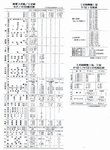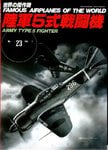alejandro_
Airman 1st Class
- 281
- Jul 4, 2005
I found these data in j-aircraft:
【V-Max(km/h / m)】
500 / 1000
520 / 2000
539 / 3000
543 / 3210
536 / 4000
551 / 5000
575 / 6000
578 / 6140
568 / 7000
556 / 8000
542 / 9000
527 / 10000
【Climb to(m / minutes】
1000 / 1'12"
2000 / 2'13"
3000 / 3'08"
4000 / 4'29"
5000 / 6'00"
6000 / 7'25"
7000 / 8'56"
8000 / 10'57"
10000 / 20'00"
Posted by Hiroyuki Takeuchi. No details on aircraft condition, fuel or power used. I have compared the performance to other estimations and a Ki-61 test.

【V-Max(km/h / m)】
500 / 1000
520 / 2000
539 / 3000
543 / 3210
536 / 4000
551 / 5000
575 / 6000
578 / 6140
568 / 7000
556 / 8000
542 / 9000
527 / 10000
【Climb to(m / minutes】
1000 / 1'12"
2000 / 2'13"
3000 / 3'08"
4000 / 4'29"
5000 / 6'00"
6000 / 7'25"
7000 / 8'56"
8000 / 10'57"
10000 / 20'00"
Posted by Hiroyuki Takeuchi. No details on aircraft condition, fuel or power used. I have compared the performance to other estimations and a Ki-61 test.




